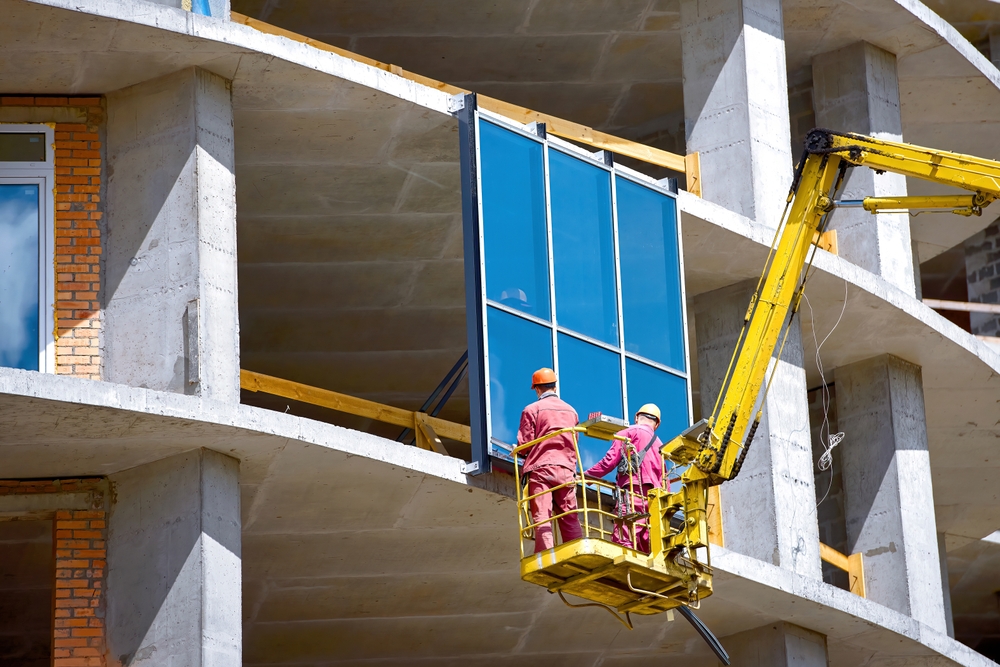In the world of architecture and construction, facades play a pivotal role in both form and function. But how does a facade work, and why is it such a crucial element of building design? This comprehensive guide will explore the intricate workings of facades, their various purposes, and the principles that govern their effectiveness.
What is a Facade?
Before diving into how a facade works, let’s establish a clear definition:
A facade is the exterior face of a building, typically the front, that serves as the primary visual element and protective barrier between the interior and the external environment.
Key Functions: How Does a Facade Work?
To understand how a facade works, we need to explore its primary functions:
- Aesthetic appeal
- Structural support
- Environmental protection
- Energy efficiency
- Property value enhancement
Let’s delve deeper into each of these functions to gain a comprehensive understanding of how facades work.
The Aesthetic Dimension: How Facades Create Visual Impact
Creating a Lasting Impression
One of the primary functions of a facade is to make a strong visual statement. Here’s how facades work to achieve this:
- Style Establishment: Facades set the architectural tone for the entire building.
- First Impressions: They create the initial impact on observers, often reflecting the building’s purpose or the owner’s taste.
- Artistic Expression: Architects use facades as a canvas to showcase their design skills and creativity.
Design Elements That Make Facades Work
To understand how a facade works aesthetically, consider these key design principles:
- Proportions: Balancing the facade’s dimensions with the overall building structure
- Contrast and Hierarchy: Using varying materials and elements to create visual interest
- Symmetry and Rhythm: Employing patterns to convey stability or dynamism
- Material Selection: Choosing surfaces that complement each other and the building’s context
The Structural Role: How Facades Support Buildings
While aesthetics are important, facades also play a crucial structural role. Let’s explore how facades work to provide support:
Load-Bearing Facades
In traditional architecture, facades often serve as load-bearing walls. This means they:
- Support the weight of floors and roofs
- Transfer loads to the building’s foundation
- Provide overall structural integrity
Modern Curtain Wall Systems
Contemporary buildings often use non-load bearing curtain wall facades, which:
- Hang from the building structure like a curtain
- Must still be structurally sound to withstand environmental forces
- Allow for more design flexibility and larger glass areas
Environmental Protection: How Facades Shield Buildings
One of the most important aspects of how a facade works is its role in protecting the building from the elements.
Weather Resistance
Facades act as a barrier against:
- Rain and moisture
- Wind and air infiltration
- Solar radiation
- Temperature fluctuations
Material Considerations for Protective Facades
| Material | Weather Resistance | Durability | Energy Efficiency |
| Glass | Moderate | High | Variable |
| Stone | High | Very High | Moderate |
| Metal | High | High | Variable |
| Concrete | High | Very High | High |
| Wood | Moderate | Moderate | Moderate |
Energy Efficiency: How Facades Optimize Building Performance
Modern facades are increasingly designed with energy efficiency in mind. Here’s how facades work to improve a building’s energy performance:
Insulation and Thermal Management
- High-performance glazing: Reduces heat transfer
- Insulation materials: Minimize energy loss
- Shading devices: Control solar gain
Ventilation and Natural Lighting
Facades can be designed to:
- Facilitate natural airflow
- Maximize daylight penetration
- Reduce reliance on artificial lighting and HVAC systems
The Facade Design Process: From Concept to Construction
To fully understand how a facade works, it’s essential to look at the design and construction process:
- Concept Design
- Establish performance criteria
- Brainstorm initial ideas
- Align with client vision
- Developed Design
- Refine concepts
- Ensure spatial coordination
- Address building regulations
- Technical Design
- Finalize specifications
- Create detailed drawings
- Select materials and construction methods
- Construction
- Oversee installation
- Conduct performance tests
- Ensure design integrity
- Handover and Maintenance
- Provide ongoing monitoring
- Perform regular inspections
- Address maintenance needs
Innovative Facade Technologies: The Future of How Facades Work
As technology advances, so does the functionality of facades. Here are some cutting-edge innovations:
- Smart Facades: Adapt to environmental conditions
- Biophilic Facades: Integrate living plants for improved air quality and aesthetics
- Energy-Generating Facades: Incorporate solar panels or wind turbines
- Self-Cleaning Facades: Use photocatalytic materials to break down dirt
Case Studies: How Facades Work in Iconic Buildings
Let’s examine how facades work in some well-known structures:
The Shard, London
- Glass facade reflects changing sky conditions
- Double-skin facade for improved insulation
Burj Khalifa, Dubai
- Reflective glazing to manage intense sunlight
- Specially designed to withstand high winds at extreme heights
One World Trade Center, New York
- Prismatic glass facade for enhanced light refraction
- Blast-resistant design for security
Challenges in Facade Design and Implementation
While facades offer numerous benefits, their design and construction come with challenges:
- Balancing aesthetics with functionality
- Meeting stringent energy codes
- Ensuring long-term durability
- Managing construction costs
- Addressing maintenance requirements
How Does a Facade Work: Key Considerations for Architects and Engineers
When designing a facade, professionals must consider various factors to ensure optimal performance:
1. Climate and Location
- Local weather patterns
- Solar orientation
- Urban context
2. Building Function
- Residential, commercial, or industrial use
- Occupancy patterns
- Interior comfort requirements
3. Structural Requirements
- Wind loads
- Seismic considerations
- Thermal expansion and contraction
4. Material Properties
- Durability
- Thermal performance
- Acoustic properties
- Maintenance needs
5. Sustainability Goals
- Energy efficiency targets
- Green building certifications
- Life cycle assessment
The Role of Technology in Modern Facade Design
Technology has revolutionized how facades work, enabling more complex and efficient designs:
Building Information Modeling (BIM)
- Virtual 3D modeling of facade systems
- Improved coordination between design disciplines
- Enhanced performance simulations
Parametric Design
- Rapid iteration of facade geometries
- Optimization of performance parameters
- Customization of facade elements
Advanced Materials
- Nano-materials for improved insulation
- Phase-change materials for thermal regulation
- Self-healing concrete for reduced maintenance
The Economic Impact: How Facades Work to Enhance Property Value
A well-designed facade can significantly impact a building’s economic value:
- Increased Curb Appeal: Attracts potential buyers or tenants
- Energy Cost Savings: Reduces operational expenses
- Brand Image: Enhances corporate identity for commercial buildings
- Longevity: Reduces long-term maintenance costs
- Market Differentiation: Sets the building apart from competitors
Sustainability and Facades: The Green Building Connection
Understanding how a facade works is crucial for sustainable building design:
LEED Certification
Facades contribute to several LEED credit categories:
- Energy and Atmosphere
- Materials and Resources
- Indoor Environmental Quality
Passive House Standards
Facades play a critical role in meeting Passive House requirements:
- Super-insulation
- Airtightness
- Thermal bridge-free design
The Future of Facades: Emerging Trends and Technologies
As we look ahead, several trends are shaping how facades will work in the future:
- Adaptive Facades: Responsive to changing environmental conditions
- 3D Printed Facades: Custom, complex geometries with reduced waste
- Biomimetic Design: Facades inspired by natural systems
- AI-Optimized Facades: Machine learning for performance optimization
- Circular Economy Principles: Design for disassembly and material reuse
Conclusion: The Integral Role of Facades in Modern Architecture
Understanding how a facade works is crucial for architects, engineers, and building owners alike. From creating stunning visual impressions to providing essential protection and energy efficiency, facades are multifaceted components that require careful consideration and expert design.
As we’ve explored, the question “How does a facade work?” encompasses a wide range of functions and principles. By integrating aesthetic appeal, structural support, environmental protection, and energy efficiency, facades play a vital role in shaping our built environment and enhancing the performance of buildings.
Whether you’re designing a new structure or renovating an existing one, considering the intricate workings of facades will undoubtedly lead to better, more sustainable, and visually striking buildings that stand the test of time.


Leave a Reply